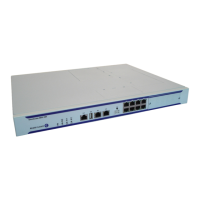Configuring a VPLS Service with CLI
Page 400 7750 SR OS Services Guide
Configuring SDP Bindings
VPLS provides scaling and operational advantages. A hierarchical configuration eliminates the
need for a full mesh of VCs between participating devices. Hierarchy is achieved by enhancing the
base VPLS core mesh of VCs with access VCs (spoke) to form two tiers. Spoke SDPs are
generally created between Layer 2 switches and placed at the Multi-Tenant Unit (MTU). The PE
routers are placed at the service provider's Point of Presence (POP). Signaling and replication
overhead on all devices is considerably reduced.
A spoke SDP is treated like the equivalent of a traditional bridge port where flooded traffic
received on the spoke SDP is replicated on all other “ports” (other spoke and mesh SDPs or SAPs)
and not transmitted on the port it was received (unless a split horizon group was defined on the
spoke SDP, see section Configuring VPLS spoke SDPs with Split Horizon on page 411).
A spoke SDP connects a VPLS service between two sites and, in its simplest form, could be a
single tunnel LSP. A set of ingress and egress VC labels are exchanged for each VPLS service
instance to be transported over this LSP. The PE routers at each end treat this as a virtual spoke
connection for the VPLS service in the same way as the PE-MTU connections. This architecture
minimizes the signaling overhead and avoids a full mesh of VCs and LSPs between the two metro
networks.
A mesh SDP bound to a service is logically treated like a single bridge “port” for flooded traffic
where flooded traffic received on any mesh SDP on the service is replicated to other “ports”
(spoke SDPs and SAPs) and not transmitted on any mesh SDPs.
A VC-ID can be specified with the SDP-ID. The VC-ID is used instead of a label to identify a
virtual circuit. The VC-ID is significant between peer SRs on the same hierarchical level. The
value of a VC-ID is conceptually independent from the value of the label or any other datalink
specific information of the VC.
Figure 43 displays an example of a distributed VPLS service configuration of spoke and mesh
SDPs (uni-directional tunnels) between SR-Series routers and MTUs.

